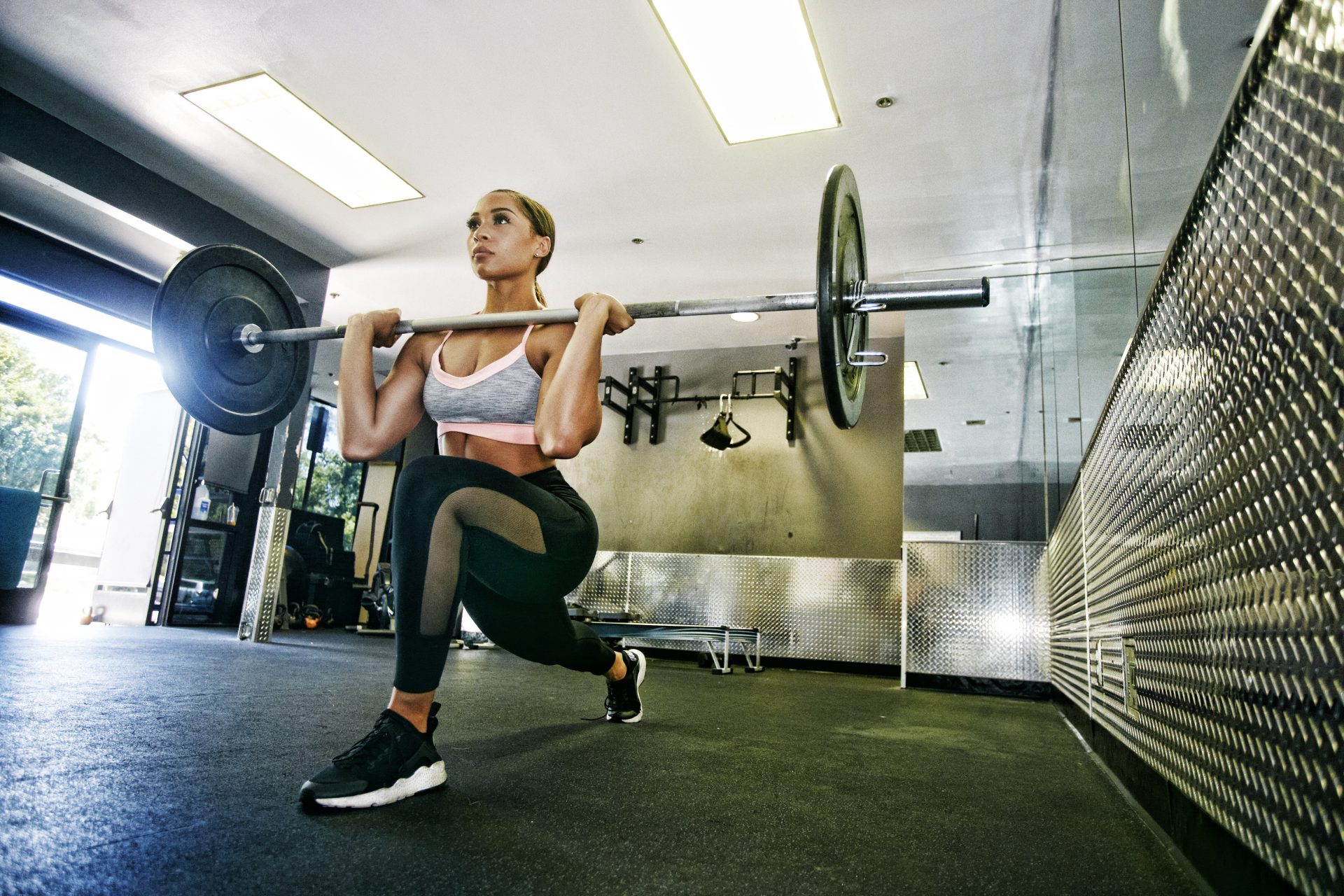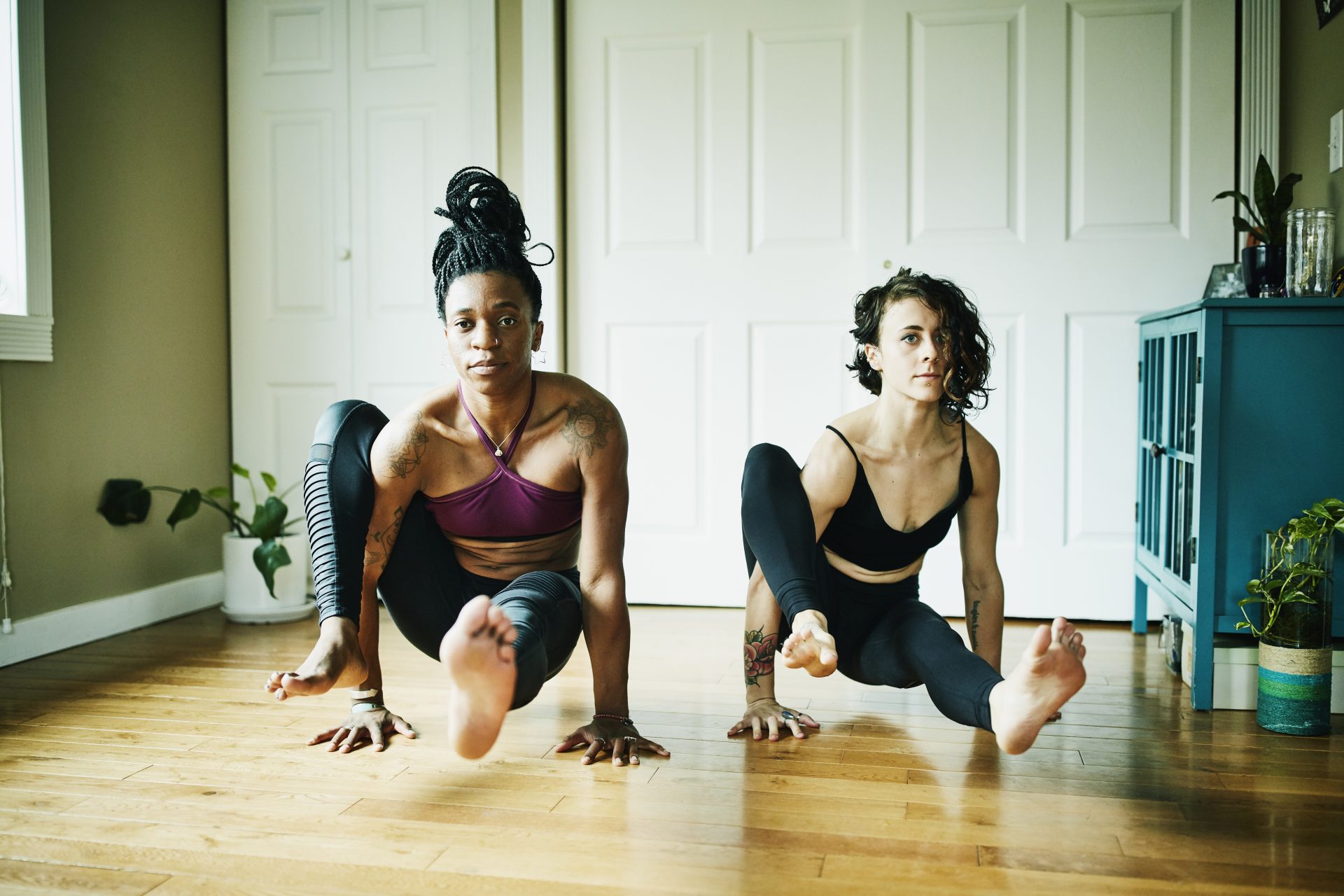Should you strength train in running shoes?
Running and weight lifting are on opposite sides of the exercise spectrum – so why would you wear the same kinds of shoes to do both?
When it comes to running, having the right shoes for your gait, style and foot shape is essential. Get it wrong and you’ll soon find that you’re hobbling your way through plantar fasciitis, shin splints, sore hips and more. But what about wearing running shoes when you’re weight training? If you’ve forked out for a new pair of runners, you might object to spending yet more on gym-specific shoes. So, can you wear the same pair across both exercises or is that a one-way path to injury?
DIFFERENT SPORT, DIFFERENT SHOES
The main difference between running and weight training shoes is the kind of support they offer:
- Running shoes are cushioned and comfy, designed to support you to move all over for a sustained period of time – and mainly in the sagittal plane (back to front).
- Weight training shoes are solid. They’ve got a hard sole and are designed to keep you stable as you move in all directions, particularly laterally (side to side).
There’s nothing like running in a pair of Saucony shoes. They’re light, padded and ultra bouncy, meaning that your feet feel supported and comfy whether you’re running 5K or 40K. Despite how lovely they are to run in, however, they’re the last things that you’d want to lift heavy in. While thick, bouncy shoes might be omnipresent at races, you’re more likely to see a pair of Nike Metcons than Air Zooms in the gym, and that’s because running shoes don’t offer the support you need when weight training.
You may also like
“The only person that can make you feel proud is you”: why Anna McNuff ran barefoot from Scotland to London
DIFFERENT KIT FOR DIFFERENT ACTIVITIES
Running shoes and weightlifting shoes are designed to do very different things. For lifting, you want really hard soles – often with a raised heel to help you to squat deeper without having to have extremely mobile ankle joints. Runners, on the other hand, often have a lot of arch support and a raised toe curl to throw you forwards and facilitate forefoot mobility, allowing you to stride comfortably.
“Running shoes are built for heel-to-toe movement and the higher heel drop in running shoes comes from added support and cushioning,” explains PT Sam Bhaumick. “Running shoes are for running, plain and simple. They protect your feet when hitting the pavement and they also help with forward movement in addition to providing more cushioning and support; running shoes are far more comfortable over long-distances when there’s more of a need for shock absorption.”
With weight training, however, you’re more concerned with balance and effective weight-bearing. You want to be able to drive your heels into the ground when you’re doing a deadlift, stay stable mid-lunge and balance during your single leg good mornings. For that, you need a stable surface – not a cushioned one. Of course, balance and stability are crucial things to have while you’re running too but the kind of balance you need while on the move is different to that which is challenged during single arm or leg movements or those in which your centre of gravity is thrown off by a heavy weight.
You wouldn’t want to run in a pair of training shoes; they’d feel clunky, hard and unsupportive if you’re used to running with your ankles pillowed in fabric. So why would you want to train in a pair of running shoes?

Two classic shoes that lots of people like to weight lift in – and which aren’t necessary sports shoes – are Vans and Converse Chuck Taylors. While you wouldn’t think about running in either, their soles and walls are made from solid rubber, making them the perfect things to balance in. If you own a pair of these and don’t want to spend any more on gym wear, you can rest easy in the knowledge that they’re as good for weight training as most specialist kicks.
So, are we screwed if we strength train in running trainers? Sam says that it’s not the end of the world but the issue is with a running shoe, “a couple of inches of cushion can make it tough to spread your body weight evenly across the foot.
“Wearing running shoes means your bodyweight won’t be as close to the ground compared to wearing flat shoes, which can adversely affect your posture and form. Weightlifting shoes provide lateral support, so when you’re doing side lunges, they stop your foot from moving as much inside the shoe – something that running shoes don’t offer.”
TIME TO GO BAREFOOT?
There are plenty of runners who believe that running barefoot – or as close to it – is the key to running healthy. Brands like Vivo Barefoot offer a wide range of minimal shoes designed to protect your feet while encouraging your foot muscles to do the work themselves, rather than the shoe. Barefoot shoes work by encouraging foot muscles to stabilise, unlike trainers with high arches which tend to prevent muscle development by providing that lift themselves. If you’re busy getting strong all over your body, why wouldn’t you also want to strengthen your feet? Because of their flat nature and lack of padding, barefoot runners double up as great workout shoes too. If you are going to run in them, however, begin by wearing them around the house and during walks first as they can take a bit of time to get used to.
You may also like
4 things I want every woman to know about strength training
If you’re working out at home on your mat, chances are that you’re used to exercising in your socks, and it’s not uncommon to see people walking around barefoot in many gym weights rooms either. That’s all well and good if you’re serious about standing properly, balancing the weight in your heels, and activating foot grip, but given that you’re probably working with heavy weights, there’s also a possibility that you could drop one on your toes… which is going to hurt.
WHEN TO SHOE-UP
Movements like deadlifts and squats might be easier done in your socks, as well as upper body movements like shoulder and chest presses, bicep and tricep curls and lat and front raises. Dynamic compound exercises like clean and press – going from a squat into an overhead press – however, often require your feet to start in one position and end up in another. Not only do you run the risk of carpet or floor burns and potentially dropping weights, but the loading that goes through your feet when you land can trigger fractures and injuries. If you’re doing moves that require moving – walking lunges, Bulgarian split squats, farmer’s walks – then you could do with a little more support, and that’s where gym shoes come in.
If you want to start training barefoot, that’s up to you; just be careful when you’re doing it. Training barefoot is probably still preferable to lifting in running shoes, purely because of the stability factor. Your runners may be super comfy but they won’t help you to lift heavier or move from side to side; in fact, they could hinder how easily you can move around.

Injury and performance aside, using specific kit for specific exercises also means that you’re more likely to extend the life of your shoes. Keep your running trainers for clocking up miles, being sure to change them every couple of years or marathon cycle, rather than wearing them every day for every activity. Keep your weight training shoes for gym work and home workouts; they should last quite a long time if you treat them right.
THE TAKEAWAY
“You’re not putting yourself in grave danger by not buying weightlifting shoes at all,” Sam clarifies, saying that it’s perfectly possible to train safely in the “wrong” shoes so long as you know what you’re doing. “My advice would be to tie your running shoes tightly enough to stop as much movement when performing weight-bearing exercises as possible.”
He says that while he wears his running shoes around the gym, “when it’s time to do those heavy compound exercises, I either go barefoot or throw on my Adidas Adipower Weightlifting shoes. These are great as they hug my foot which gives me more targeted support and they lock down my midfoot – providing more stability. They’re also very lightweight and have a glove-like fit which means there’s less room for movement within the shoe.” So, if you can’t afford flat kicks, try going barefoot and if you don’t like the idea of going shoeless or your gym doesn’t allow it, tie your shoes tightly.
Follow on @StrongWomenUK Instagram for the latest workouts, delicious recipes and motivation from your favourite fitness experts.
Images: Unsplash
Source: Read Full Article
